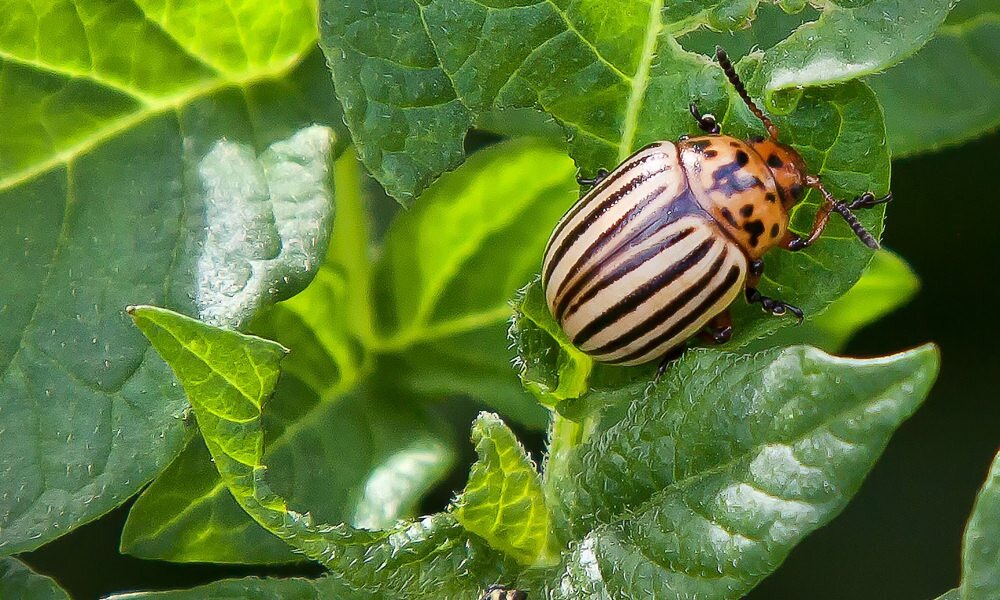The Colorado potato beetle, an infamous pest that wreaks havoc on potato plants and other Solanaceae family members, poses a significant challenge for gardeners. In this article, we will explore effective strategies and preventive measures to shield your plants from the relentless damage caused by this voracious beetle.
The Colorado potato beetle, scientifically known as Leptinotarsa decemlineata, is a significant pest that affects potato plants and other members of the Solanaceae family, including tomatoes, eggplants and peppers. It is native to the western regions of North America, particularly Colorado, hence its name.
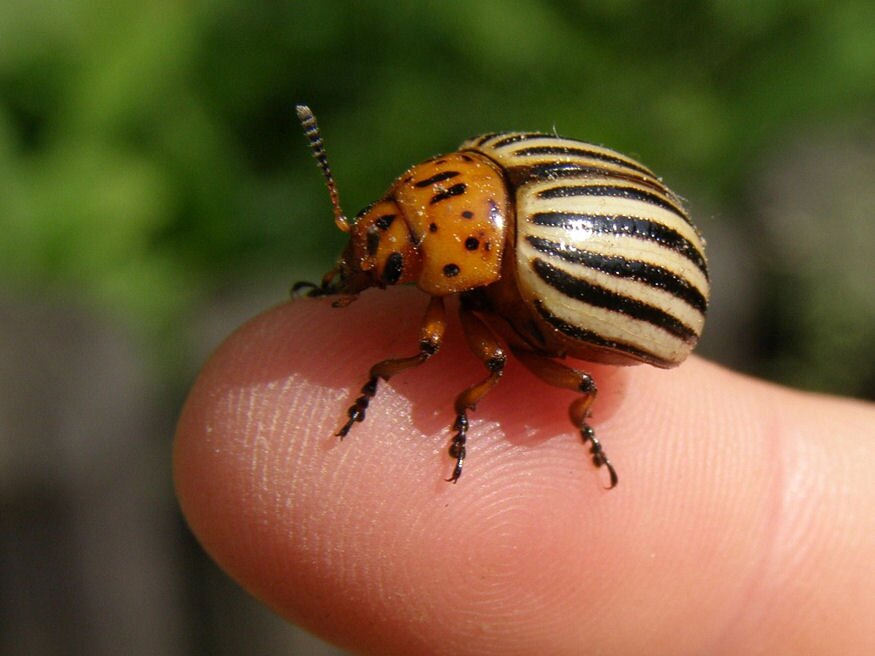
The Colorado potato beetle has spread beyond its native range and is now present in various parts of the world. It has become a significant pest in many regions where potatoes and other susceptible plants are grown. Some areas where the Colorado potato beetle is known to be present in significant numbers include:
- North America: In addition to its native range in western North America, the beetle is prevalent throughout the United States and Canada, including eastern regions.
- Europe: The Colorado potato beetle has established populations in several European countries, including Germany, France, Poland, Russia and Ukraine.
- Asia: It is found in parts of Asia, such as China, Japan and South Korea, where potatoes and related crops are cultivated.
- Australia: The beetle has been detected in Australia and is a concern for potato growers in certain regions.
- New Zealand: While not as widespread as in other regions, the Colorado potato beetle has been reported in localized areas of New Zealand.
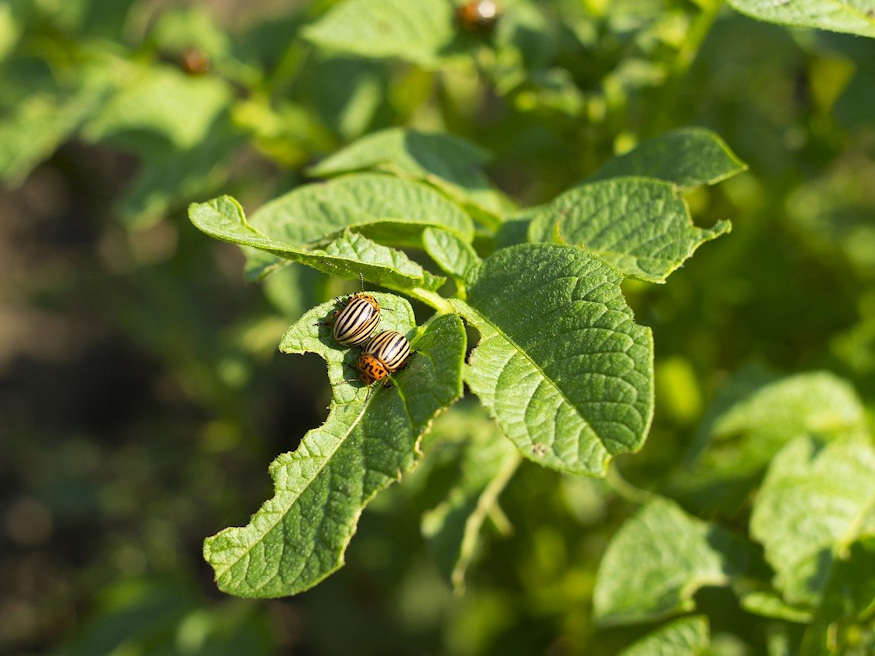
It’s worth noting that the distribution and abundance of the Colorado potato beetle can vary within these regions, influenced by factors such as climate, host plant availability and management practices.
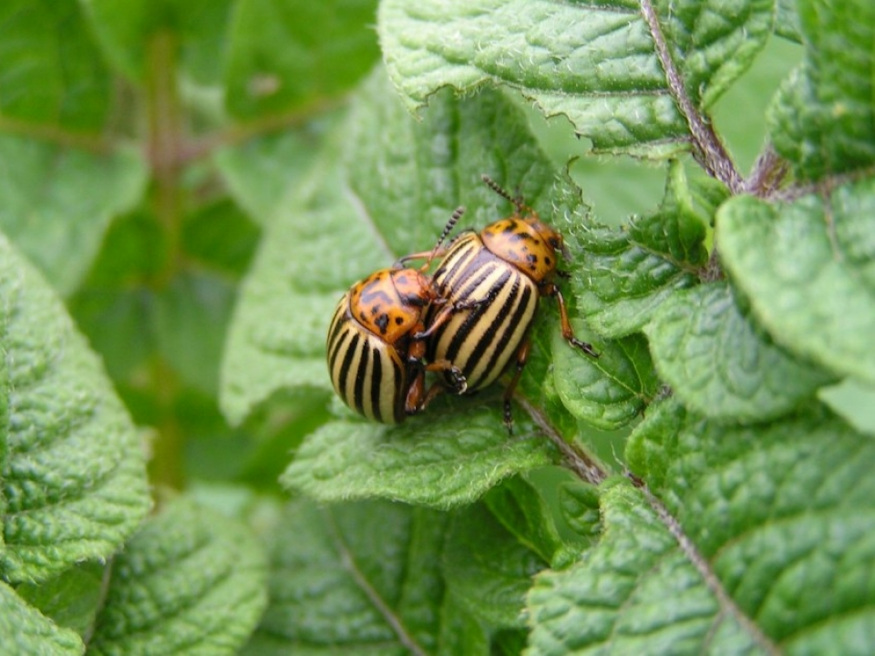
Description
The adult Colorado potato beetle is approximately 10 millimeters long and has an oval-shaped body. It features distinctive yellow and black stripes on its wing covers, making it easily recognizable. The larvae are usually orange with a series of black spots along their bodies. As they grow, the larvae turn into plump, humpbacked grubs.
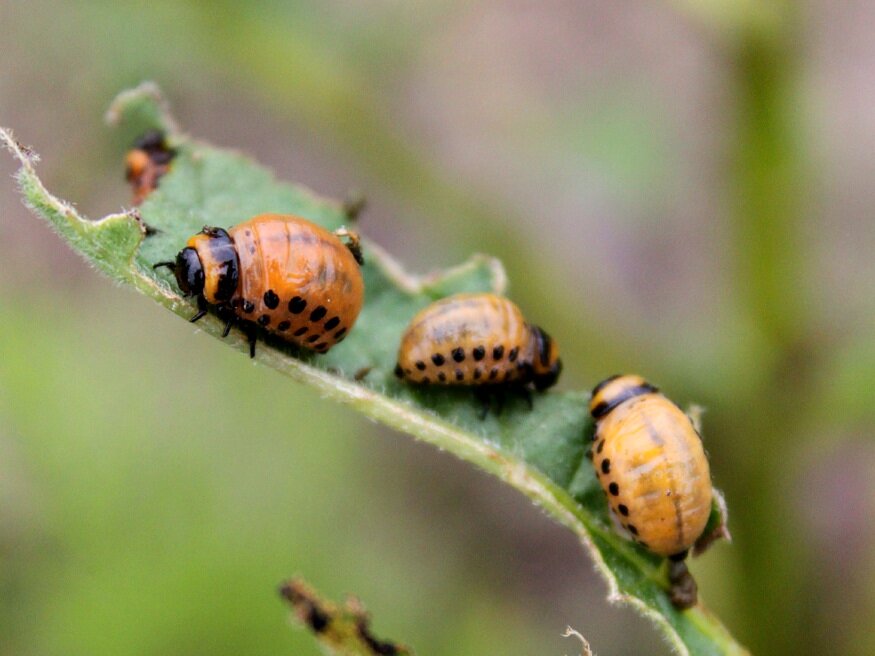
Plants Damaged
The Colorado potato beetle primarily targets potatoes, both the foliage and the tubers. However, it can also infest other plants in the Solanaceae family, including tomatoes, eggplants and peppers. The beetles feed on the leaves, leaving behind a characteristic skeletonized appearance. Severe infestations can lead to significant defoliation, weakening the plants and reducing yields.
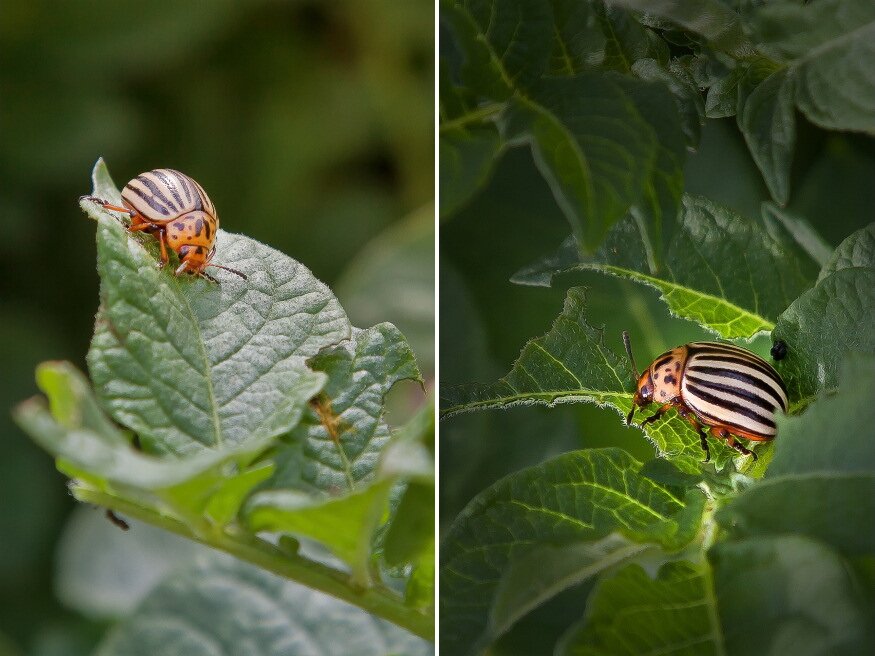
Old and New Control Methods
Controlling Colorado potato beetles can be challenging, but there are several strategies available:
- Manual Removal: Hand-picking and squishing the adult beetles, as well as their yellow egg clusters found on the undersides of leaves, can be effective for small-scale infestations.
- Row Covers: Covering susceptible plants with lightweight fabric or mesh can physically prevent the beetles from reaching and damaging them.
- Crop Rotation: Rotating potato crops to different locations each year helps disrupt the beetle’s life cycle and reduces the buildup of larvae in the soil.
- Natural Predators: Encouraging natural enemies such as ladybugs, lacewings and parasitic wasps can help control Colorado potato beetles. You can do this by providing suitable habitats like flowering plants and avoiding the use of broad-spectrum insecticides.
- Neem Oil: Applying neem oil to the foliage can act as a repellent and disrupt the beetle’s feeding habits.
- Insecticidal Soaps and Biological Insecticides: These options can be used as a last resort when other methods fail. Always follow the instructions and safety guidelines provided by the product.
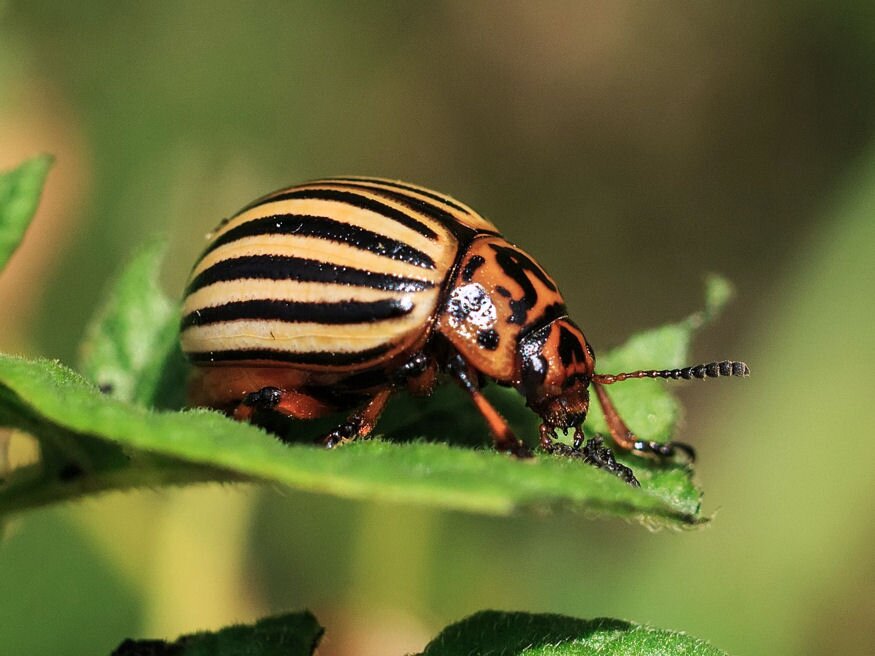
Prevention
To prevent Colorado potato beetle damage, gardening experts recommend the following measures:
- Early Planting: Planting potatoes early in the season can help avoid the peak period of beetle activity.
- Clean Garden Practices: Remove plant debris, such as old leaves and tubers, at the end of the growing season to eliminate overwintering sites for beetles.
- Crop Monitoring: Regularly inspect plants for the presence of eggs, larvae and adult beetles. Early detection allows for prompt action.
- Varietal Resistance: Some potato varieties exhibit natural resistance to Colorado potato beetles. Consider selecting resistant varieties for your garden.
- Companion Planting: Planting repellent or trap crops like coriander, tansy or nasturtiums around your potatoes can help deter the beetles.
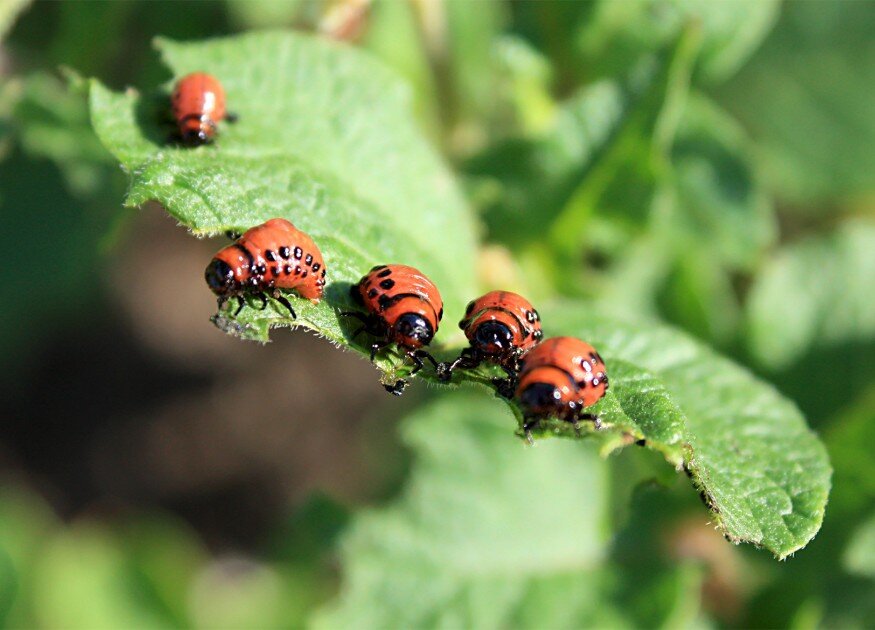
Remember, it’s important to employ an integrated pest management (IPM) approach that combines multiple strategies to control Colorado potato beetles effectively while minimizing the use of pesticides.
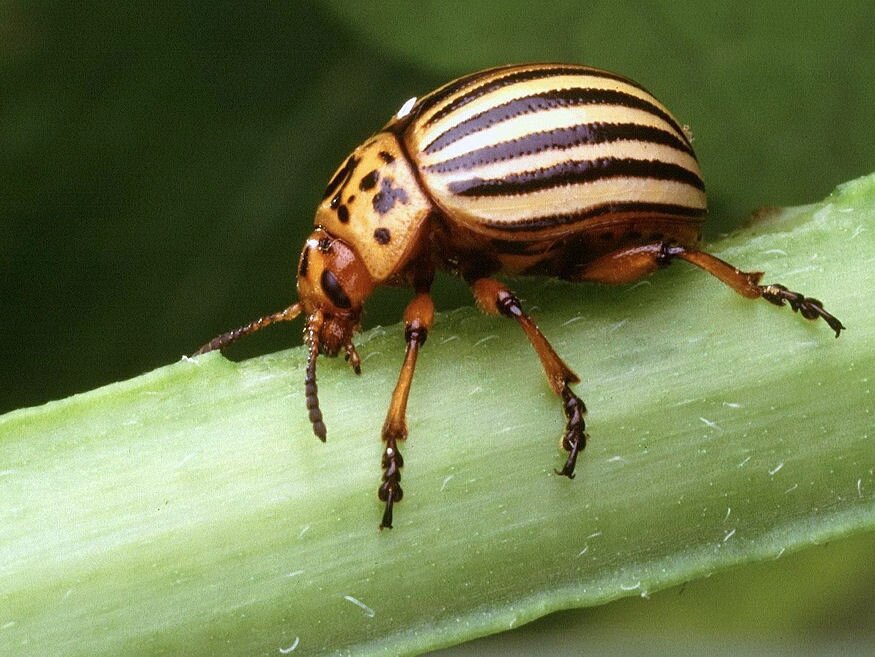
Integrated Pest Management (IPM) is a comprehensive and sustainable approach to pest control that combines various techniques such as biological control, cultural practices, monitoring and judicious use of pesticides. It aims to minimize the economic, environmental and health risks associated with pests while effectively managing their populations to maintain a balanced ecosystem.



